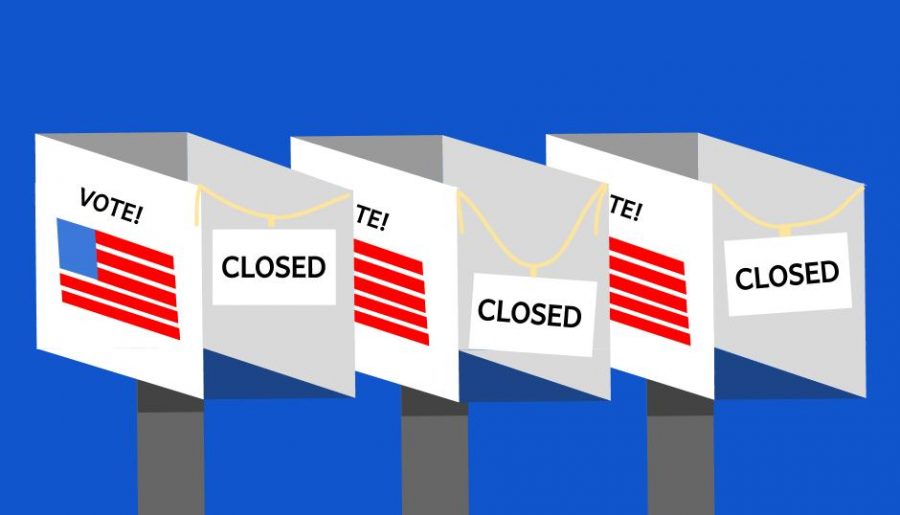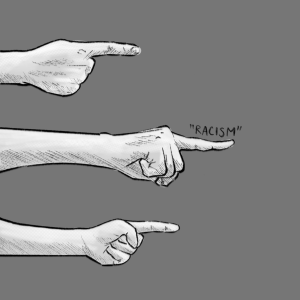The Attack on Voting in the 2020 Election
Age-Old Suppressive Patterns Resurface, Dismantle a Successful Democracy
October 30, 2020
The stakes in the 2020 election are higher than ever, and have triggered an early surge of voting. A record number of US citizens have already participated in the election and cast their ballot to vote for the next President of the United States. However, of the millions that have voted, many have faced some unsettling obstacles. President Trump has been clear on his stance that voter fraud could impact the outcome of the election this year, and not necessarily in his favor. Not only has this given him an alleged justification to refuse a peaceful transfer of power come November, it has also driven him to turn to a familiar political strategy in a desperate attempt to take back control of the election.
The term “voter suppression” was born in the 1960s, almost immediately after the 1964 Civil Rights Act was passed. While the bill was technically supposed to outlaw discrimination based on race, many discriminatory practices remained intact. This included literacy tests, distributed to African-American citizens beginning in the 1890s. They were supposedly meant to keep uneducated or illiterate Americans from participating in elections, but targeted exclusively Black voters. Voter suppression continued into the early 1980s, when the Republican Party deployed task forces, known as the National Ballot Security Task Force (BSTF), in a not-so-subtle effort to intimidate voters at polls during that year’s election. Tactics during this time were more aggressive; ranging from physically chasing away or challenging voters of color, to pointedly flaunting their government-issued revolvers.
It seems that the door for the exploitation and manipulation of voters across the country has been opened once again.
Today, the practice remains just as prominent but strategies are far more political, taking the shape of arcane policies and legislature. These methods attempt to control and limit who gets to vote and who has access to the voting polls. Gerrymandering, for example, reworks district lines to manipulate the populations and its demographics, and redistribute voters. In extreme cases, gerrymandering can fully prevent majority parties from winning elections. This happened during the midterm elections in 2018, one of the more extreme cases being North Carolina. Democrats won approximately 50% of the popular vote, but only managed to win 3 of the 13 congressional seats because Republicans were able to concentrate the majority of democratic voters into just 3 districts by redrawing district lines. Studies showed that in order to win a fourth seat (less than a third of the 13 available), Democrats would have to claim more than half of the vote.
State legislation like Voter ID and registration requirements has also continuously changed throughout recent elections, preventing huge percentages of populations from voting. ID expenses paired with the increasing difficulty to get time off of work are consistently keeping lower and middle class Americans from the polls. Meanwhile, felony disenfranchisement, a well-known issue in both state and federal government, prevents anyone with previous felony convictions from voting.
As these issues came to light and continued to intensify, a collection of laws were passed in an effort to stop voter suppression and intimidation. It began with the Voting Rights Act of 1965, which required any areas with a history of voter discrimination to get permission to make any changes in voting polls and requirements to combat racist practices like the literacy tests. Later, after a legal battle between the Democratic and Republican National Committees, the 1981 Consent Decree was passed to prevent targeted campaigns discouraging Black families from voting and banned armed officers at polling stations. However, the change didn’t last long. A crucial section of the Voting Rights Act was torn down by the supreme court in 2013, and the 1981 consent decree expired in 2017. It seems that the door for the exploitation and manipulation of voters across the country has been opened once again.
Our electoral system cannot be considered a democracy if the people in power are picking and choosing who gets a say.
Today, with the infamous Donald Trump at the epicenter of American politics, a new surge of voter intimidation practices have taken over polling stations nationwide. In early October, Trump’s call for an “army” of poll watchers sounded eerily similar to the 1980 disaster. As one of the first major elections since the abolition of protective voting laws, the extremist views being perpetuated by Trump’s claims of voter fraud are especially dangerous. Many polling stations—unsurprisingly, polling stations exclusively in more diverse and democratic areas—have already seen “off duty law officials” patrolling the area, with misleading titles that boast a non-existent legitimacy and a hidden affiliation with the Republican National Committee. Meanwhile, the Trump administration has been throwing millions of dollars at uncharacteristic items like funding for African-American communities, prescription drugs and healthcare for senior citizens, and larger stimulus packages for COVID-19 relief funds—all of which he proclaimed to be against early on in his presidency. Many believe this is Trump’s way of buying back as many voters as possible after his campaign hit a recent standstill in early polling numbers.
Additionally, huge amounts of polling stations are being closed, specifically neighborhoods with higher Black and Latinx populations. These changes are leaving people of color and lower income families to deal with hours in line before they can even enter the polling station, while those in white suburbs are in and out in a matter of minutes. Some claim this is a result of COVID-19 prevention methods that removed a number of in-person polling stations in an effort to slow the spread of the virus. However, after Trump’s almost militaristic call for justice based on nothing but self-pride and a healthy dose of ignorance, it’s clear that the current administration is working hard to gain control of voters. The President and Vice President seem to be doing everything they can to ensure there won’t need to be a transfer of power, peaceful or not. The Trump administration has made it difficult to trust the legitimacy of elections in the United States, not because of fraudulent mail-in ballots as the President claims, but because of the political practices that are silencing a substantial part of the American population. Our electoral system cannot be considered a democracy if the people in power are picking and choosing who gets a say.











